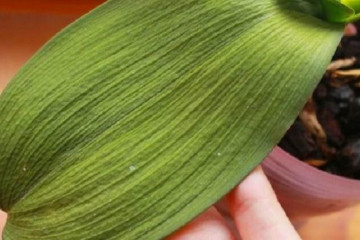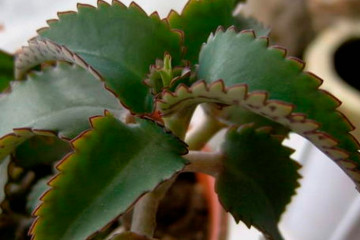Pests of roses and the fight against them. How to prevent flowers from dying
Content:
Diseases and pests severely damage rose bushes. They can lead to their death, if you do not consider the green bugs on the roses in time and kill them. Timely and correct treatment of bushes as preventive measures will avoid many problems. This is the best way to prevent disease and flower death.
Insects on roses - how they harm and why they eat leaves and buds
Delicate rosebuds are susceptible to pests. If you do not organize the fight against insects in time, you can lose the plants. You need to know how and how to process roses in order to prevent harm to them. Process the bushes in time, protecting the rest of the vegetation in the backyard.
What to do if pests appeared and the flower began to die. How to deal with pests?
When insects appear that negatively affect roses, it is recommended to immediately resort to the use of pesticides. Folk remedies are suitable as a prophylaxis if there is a slight infection with a small localization. In other cases, you need to act immediately, not allowing pests to spread throughout the garden.
The general scheme of placing pests on a rose bush
There are a huge number of insects that damage rose bushes. They affect foliage, stems, buds and even the root system of plants. It all depends on the pest and what it eats.
The main gnawing pests of roses and the fight against them
With the beginning of the growing season, gnawing insects begin to attack roses. They devour the buds and buds of flowers, slowing down the growth and development of the shrub. They gnaw the stem and foliage, drink the juice. They can completely eat the whole rose. It is necessary to calculate in time, identify the insect and organize a fight with it.
Drooling penny, or omnivorous leafhopper
If there are green insects on the rose, what to do? You need to consider the pest. Pennitsa has a yellow-gray tint. The larvae accumulate in frothy secretions that resemble saliva. They live in the axils of the leaves. The pest sucks sap from plants, forming ovaries.
If there are not too many foam lumps on the rose, remove them by hand. Otherwise, you should use organic or chemical products. Before applying the drug, the rose bush is washed from a hose with drainage water.
Rose leafhopper
Able to quickly destroy the plant. Drinks rose juice, causing irreparable harm to her. It is not only the flower that amazes, but also the surrounding vegetation in the garden or in the country. Several generations of small pests can appear in one season.
These are small white larvae that are static. They are located on the lower part of the foliage. An adult may have a yellow tint. The body is elongated. The pest is extremely active. After touching a leaf, quickly jumps over to another, avoiding danger. If you do not make treatment on time, spraying the bush with a special composition, the foliage will turn yellow and fall off. The insect will spread to other plants.
Rose aphid
Presented in the form of small beetles on roses. They have a green or brown tint. They live in colonies. Damage to leaves, shoots and flower buds. In the spring, the pest wakes up. Begins to eat anything that has a green tint. Attacks indoor, cultivated and ornamental plants.
What to do if green bugs appear on garden roses:
- Attract natural enemies of pests - sparrows and tits. Make a small birdhouse in your bird garden.
- Plant calendula by increasing the number of ladybugs, which also actively eat aphids.
- Use chemicals that will get rid of aphids and help cure garden flowers. Biological substances are also suitable.
There are many known treatment options for plants. The choice depends on their quantitative characteristics. If aphids are concentrated in local areas, you can use light biological agents. When there are many colonies, it is necessary to resort to pesticides.
Rose sawfly caterpillars
The insect feeds only on the cell sap of a green plant. This becomes possible thanks to the piercing-sucking oral apparatus. The pest first pierces, after which it drinks the juice of the rose. The bush stops developing. Begins to turn yellow. Foliage curls. If measures are not taken in time, the plant will inevitably die.
Leaf rollers
These beetles on roses are divided into two categories: fruit and rose beetles. Roses are susceptible to both pests. Rose pests appear in early spring. They eat buds that do not even have time to bloom. The effect of fruit beetles only appears towards the end of May. They devour young stems and leaves.
If there are few insects, it is enough to collect them mechanically. In other cases, it is worth immediately using pesticides. Special attention is paid to preventive spring work. Traditional methods of dealing with leaf rollers are used. Sprinkle mustard powder on the bushes.
Rose sawflies
They are white-belted and descending. The latter attack roses more often. The larvae hibernate in the ground. In the spring they pupate and turn into a mature individual. The parasite has a black shiny back. Reaches sizes up to 6 mm.
The female, laying eggs on the tops of young stems, provides the larvae with the best food. They gnaw shoots. They are introduced into the stem. It turns dark and dries up.
How to get rid of green sawfly insects on rosebuds:
- Take a holistic approach - cut off damaged stems and branches. Burn to prevent relapse.
- Treat the bushes with an insecticide.
- Dig up the ground in the fall to bring the larvae outside. This way they will not be able to endure the winter.
How to deal with beetles - bronze and deer
Small bugs that feed on flowers of roses and other plants from May to August. They can only be effectively dealt with manually. Pests are collected and destroyed in the morning when they are motionless. You can make small traps in the garden in the form of containers with fermented sweet compote. Covering material is used as protection.
Both beetles actively eat rose petals.Flowers of light colors suffer most from pests.
How to process roses from other pests
The danger for roses is represented by other insects that parasitize not only roses, but also on a number of growing plants, bushes, trees.
Spider mite
The most common rose pest. Leads to a general weakening of the flower. The foliage is falling. Reduced immunity. The plant becomes vulnerable to many infectious diseases.
The peculiarity of the insect is the rapid change of generations and adaptation to toxic substances. It is necessary to process the bushes every three days. You can use chemicals such as:
- Sunmight;
- Flumite;
- Apollo.
Thrips on roses
A sign of an insect attack is a grayish-brown bloom on the foliage of roses. Thrips feed on cell sap. Colorless spots appear first. Then they increase in size. Holes appear from dead leaves. The buds lend themselves to deformation. They fall prematurely without blooming. The pest is mobile, which is why it quickly moves from a diseased plant to a healthy one.
Shield
The female scale insect is capable of disguising itself in the color of the foliage. It is difficult to notice it. Is that on general grounds:
- small red or brown blotches;
- fathom bloom;
- stops the active growth of the plant.
It is recommended to constantly inspect the rose. Especially the back of the foliage. When a sticky plaque appears, you need to start treatment. There is no special means of fighting the scabbard. It is necessary to process the foliage with soapy water. The procedure is repeated after a few days.
Leaf cutter bee
After being hit by insects, ideally even oval or round holes remain. The bee does not eat them, but makes its own dwelling. The harm to the rose is minimal. Doesn't do much damage. Do not use chemicals. Enough organic processing from bees.
Weevil
The weevil is a rather large beetle, reaching a size of 10 mm. It is difficult to identify it, since the insect is nocturnal. Leads an active lifestyle with the onset of dusk. Adults eat the leaves. The larvae destroy the root system of the rose, hiding in the soil.
To get rid of weevils, it is recommended to use insecticides. Spraying is performed in the evening. "Aktara" or "Inta-vir" are used.
Ants
The main danger posed by ants is the spread and protection of aphids. To protect the vegetation in the garden, it is recommended to spray the soil near the rose with water with aromatic spices and essential oils. Strong smells will ward off insects, preventing them from harming flowers. Prevention is essential for a healthy garden.
Calendar of rose treatments from pests
There is a list of recommended treatments:
- With the appearance of the first foliage, it is necessary to spray the bushes with powdery mildew and spotting agents. Use insecticides. Processing is repeated at intervals of 10 days.
- When the buds are extended, insecticide treatment is performed again.
- At the end of July, it is recommended to repeat the first step, but taking into account the regular replacement of drugs to prevent addiction.
Midges, flower beetles, aphids, beetles, scale insects - an incomplete list of pests that love to feast on roses in the garden. They attack the bush by drinking juice and eating foliage.It is necessary to detect the pest in time and begin an active fight against it. Most insects are omnivorous and infect indoor, cultivated and ornamental plants, trees and bushes.
























